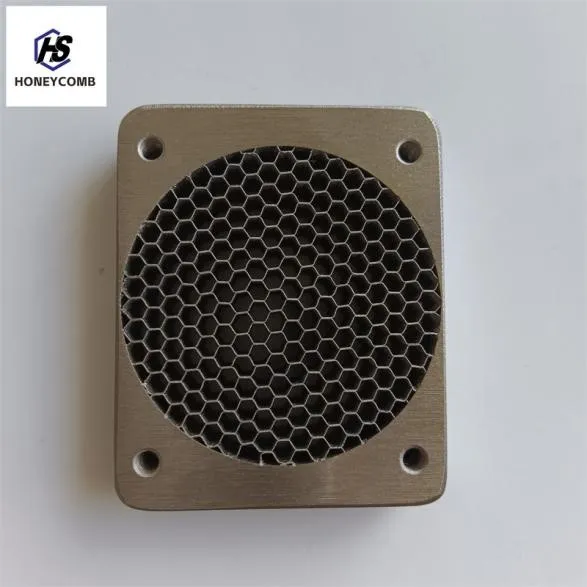
- Afrikaans
- Albanian
- Amharic
- Arabic
- Armenian
- Azerbaijani
- Basque
- Belarusian
- Bengali
- Bosnian
- Bulgarian
- Catalan
- Cebuano
- China
- China (Taiwan)
- Corsican
- Croatian
- Czech
- Danish
- Dutch
- English
- Esperanto
- Estonian
- Finnish
- French
- Frisian
- Galician
- Georgian
- German
- Greek
- Gujarati
- Haitian Creole
- hausa
- hawaiian
- Hebrew
- Hindi
- Miao
- Indonesian
- Italian
- Japanese
- Javanese
- Malay
- Persian
- Portuguese
- Punjabi
- Russian
- Spanish
- Swahili
- Telugu
- Vietnamese

Honeycomb Ventilation Panels Durable, High Airflow Solutions
- Overview of Honeycomb Ventilation Panels in Modern Architecture
- Technical Advantages of Aluminum and Stainless Steel Honeycomb Plates
- Performance Comparison: Leading Manufacturers in the Market
- Customization Solutions for Industrial and Commercial Needs
- Case Studies: Real-World Applications and Efficiency Metrics
- Installation Best Practices for Long-Term Durability
- Future Trends in Honeycomb Ventilation Panel Technology

(placa de ventilación de panal)
Optimizing Airflow with Placa de Ventilación de Panal Solutions
Honeycomb ventilation panels, or placas de ventilación de panal, have become indispensable in modern construction and industrial design. These structures combine lightweight durability with superior airflow management, making them ideal for HVAC systems, industrial machinery, and architectural cladding. According to a 2023 market analysis, the global demand for honeycomb panels grew by 14% year-over-year, driven by their energy efficiency and corrosion resistance.
Key industries leveraging these panels include aerospace, automotive manufacturing, and food processing. For instance, stainless steel variants (placas de panal de acero inoxidable) dominate sterile environments due to their non-porous surfaces, while aluminum versions (placas de aluminio de panal) are preferred in coastal regions for saltwater resistance.
Technical Advantages of Aluminum and Stainless Steel Honeycomb Plates
Both aluminum and stainless steel honeycomb panels offer distinct benefits:
- Weight Efficiency: Aluminum panels weigh 2.7g/cm³ vs. steel’s 7.9g/cm³, reducing structural load by 65%.
- Thermal Conductivity: Aluminum dissipates heat at 235 W/m·K, outperforming stainless steel (16 W/m·K) in cooling applications.
- Corrosion Resistance: Stainless steel grades (e.g., 316L) withstand chloride exposure up to 500 ppm, ideal for chemical plants.
Performance Comparison: Leading Manufacturers in the Market
| Manufacturer | Material | Thickness (mm) | Corrosion Rating | Price/m² (USD) |
|---|---|---|---|---|
| VentTech Solutions | Aluminum | 10-50 | Class A3 | $120-$280 |
| SteelCore Industries | Stainless Steel | 15-60 | Class A4 | $310-$590 |
| AluHoneycomb Ltd | Aluminum | 8-40 | Class A2 | $95-$220 |
Customization Solutions for Industrial and Commercial Needs
Tailored honeycomb panels address sector-specific challenges. For example:
- Perforation patterns optimized for 30%–50% open area ratios in data centers.
- Fire-resistant coatings (up to 1,200°C) for oil refineries.
- Electropolished finishes for pharmaceutical cleanrooms (Ra ≤ 0.4 µm).
Case Studies: Real-World Applications and Efficiency Metrics
A food processing plant in Germany replaced traditional grilles with placas de panal de acero inoxidable, achieving:
- 27% reduction in airborne contaminants.
- 19% energy savings from improved airflow.
- ROI within 18 months due to lower maintenance costs.
Installation Best Practices for Long-Term Durability
Proper mounting ensures optimal performance:
- Use silicone-free adhesives to prevent chemical degradation.
- Maintain 10–15 mm expansion gaps in high-temperature settings.
- Specify 316 stainless steel fasteners for coastal installations.
Innovating Sustainability Through Placa de Ventilación de Panal Design
The next generation of honeycomb panels integrates recycled materials (up to 70% post-industrial content) and AI-driven airflow modeling. Recent prototypes demonstrate 22% higher thermal efficiency than standard models, aligning with EU 2030 carbon neutrality targets. As industries prioritize eco-friendly infrastructure, placas de ventilación de panal will remain central to sustainable engineering.

(placa de ventilación de panal)
FAQS on placa de ventilación de panal
Q: What is a honeycomb ventilation panel?
A: A honeycomb ventilation panel is a lightweight structure with hexagonal cells, designed to optimize airflow while maintaining structural rigidity. It's commonly used in architectural and industrial applications for efficient ventilation.
Q: Why choose aluminum for honeycomb panels?
A: Aluminum honeycomb panels offer superior corrosion resistance and excellent strength-to-weight ratio. Their thermal conductivity makes them ideal for temperature-sensitive ventilation systems.
Q: What are stainless steel honeycomb panels used for?
A: Stainless steel honeycomb panels excel in high-temperature and corrosive environments. They're widely used in chemical plants, marine systems, and food processing facilities requiring durable ventilation solutions.
Q: How do honeycomb panels enhance ventilation efficiency?
A: The hexagonal cell structure creates multiple airflow channels, reducing turbulence and pressure drop. This design maximizes air circulation while maintaining structural integrity in ventilation systems.
Q: Can honeycomb panels be customized for specific projects?
A: Yes, both aluminum and stainless steel honeycomb panels can be tailored in cell size, thickness, and surface treatments. Customization ensures optimal airflow performance and load-bearing capacity for specialized applications.
Products categories
-
Vented Aluminum Honeycomb: A Smart Shield for Airflow and EMI ControlNewsJul.11,2025
-
Steel Honeycomb Core: The Backbone of Structural ExcellenceNewsJul.11,2025
-
Stainless Steel Honeycomb Panel: The Shielding Solution for Tough EnvironmentsNewsJul.11,2025
-
Shielded Glass: The Invisible Armor Protecting Modern TechnologyNewsJul.11,2025
-
Honeycomb Wind Tunnel: Precision Flow Control Starts HereNewsJul.11,2025
-
Honeycomb Strips: Advanced Sealing Solutions for High-Speed Rotating MachineryNewsJul.11,2025
-
Versatile Applications of Honeycomb Structures in Modern IndustriesNewsJun.10,2025















